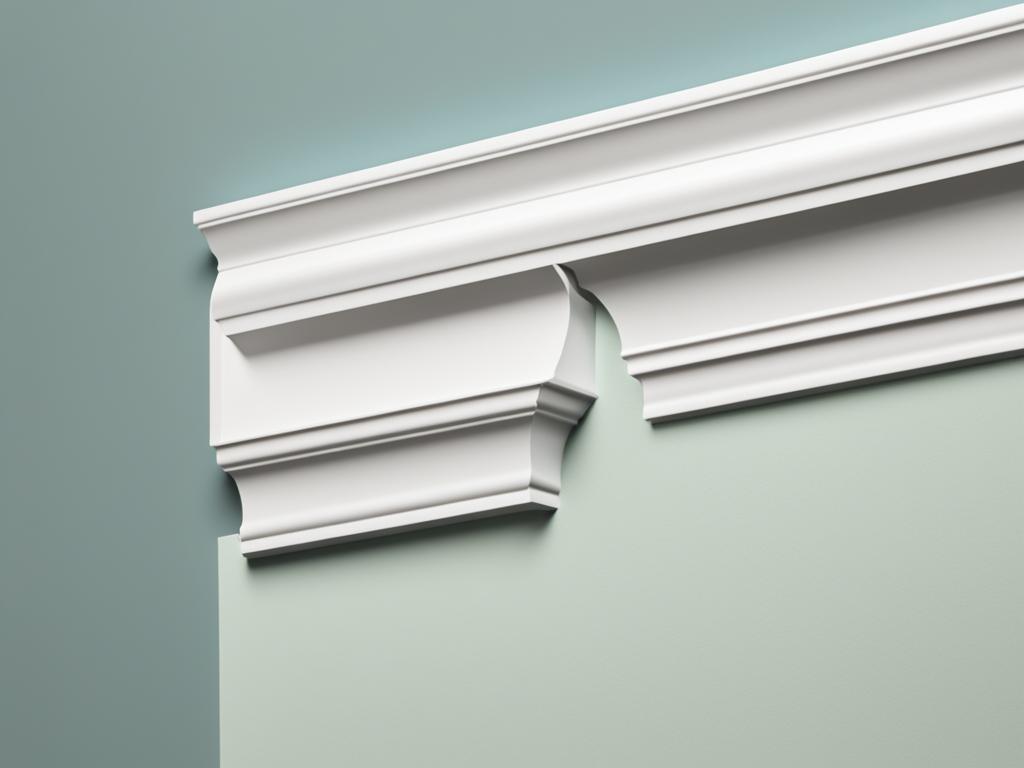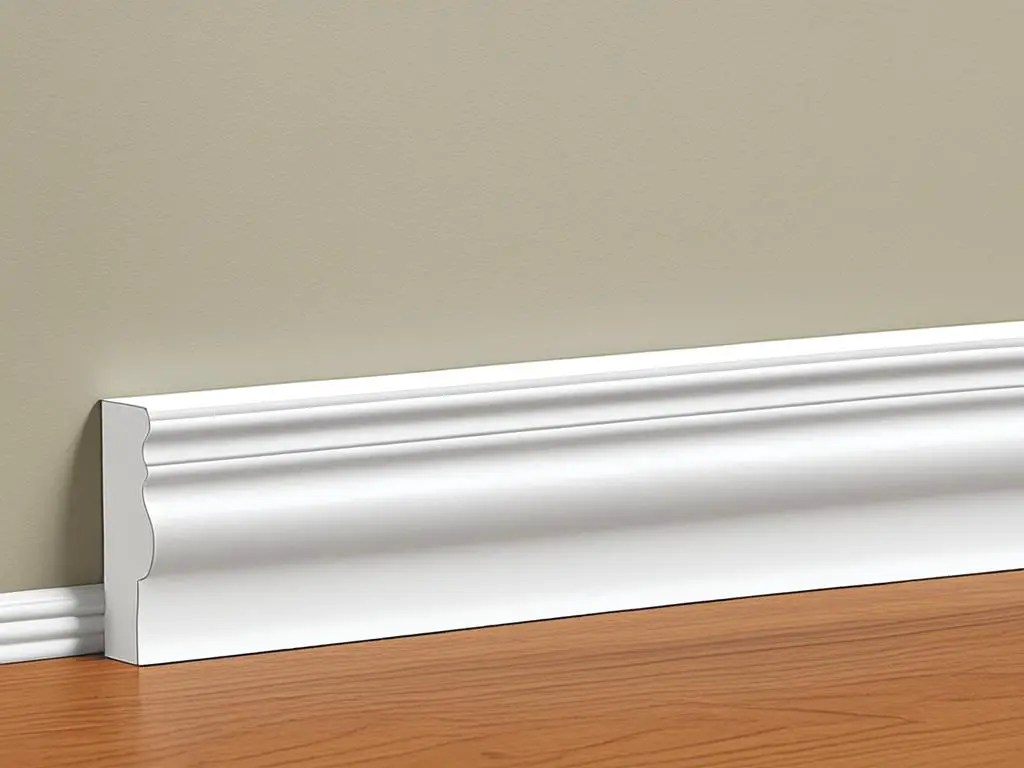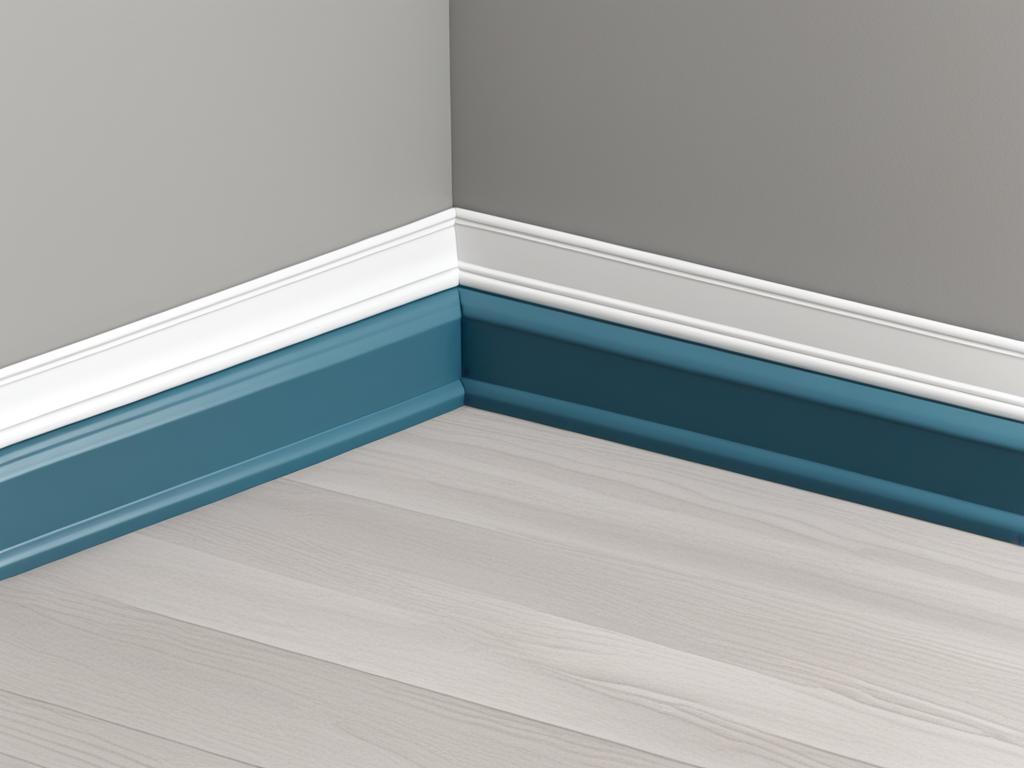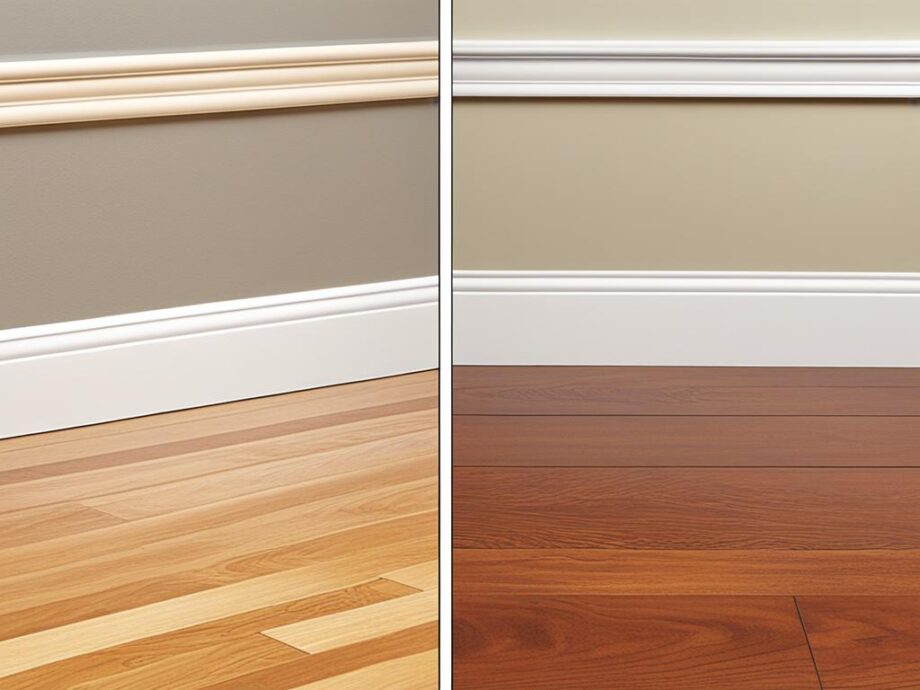When it comes to interior design and trim work, the choice between quarter round and shoe molding can make a significant impact on the overall look and feel of your space. These two types of molding serve similar purposes but have distinct differences that you need to consider.
In this article, we will explore the differences between quarter round and shoe molding to help you make an informed decision for your home. Whether you’re embarking on a new construction project or planning a renovation, understanding the characteristics and benefits of each option is crucial.
Key Takeaways:
- Choosing the right molding is essential for achieving your desired interior design aesthetic.
- Quarter round molding provides a seamless transition between baseboards and flooring.
- Shoe molding offers a more finished and polished look, particularly in older homes.
- Consider factors like cost, installation process, and maintenance requirements when deciding between the two options.
- Consulting with a professional can help you make an informed decision tailored to your specific needs.
Understanding Quarter Round Molding
Quarter round molding is a versatile trim that adds a finishing touch to your baseboards and other areas of your home. It is a small, rounded molding that is typically installed at the junction of the floor and baseboard. This trim is available in various materials and finishes, allowing you to choose the one that complements your interior design.
So, how does quarter round molding enhance the look of your trim and baseboards? Its primary purpose is to cover the gaps between the baseboard and the floor, providing a seamless transition between the two. This not only improves the overall appearance but also helps protect your baseboards from damage and wear over time.
One of the advantages of using quarter round molding is its versatility in different home improvement projects. Whether you have hardwood, laminate, tile, or carpeted floors, quarter round molding can be used to create a polished and cohesive look. Additionally, it offers flexibility when installing baseboards in older homes with uneven floors.
However, it is important to consider the disadvantages as well. Quarter round molding can make cleaning more challenging, as dust and debris can accumulate in the small grooves and corners. Moreover, if not installed properly, it can create a breeding ground for pests. Regular maintenance and cleaning are necessary to keep your quarter round molding looking its best.
Quarter round molding is a popular choice for many homeowners due to its aesthetic appeal and practical benefits. It can enhance the overall appearance of your trim and baseboards while providing a neat and seamless transition between the floor and the baseboard.
When comparing quarter round molding to shoe molding, it is important to consider your specific needs and preferences. Quarter round molding is typically preferred when you want a more traditional and classic look, while shoe molding is often chosen for a more modern and streamlined design. Additionally, the installation process and cost may vary between the two options.
In the next section, we will explore shoe molding in detail and discuss its purpose and advantages in interior design and renovation projects.

Exploring Shoe Molding
When it comes to interior design and renovation, shoe molding is a versatile option that can add the perfect finishing touch to your space. Also known as base shoe or quarter round shoe, this type of molding is commonly used to bridge the gap between the floor and baseboard, providing a seamless transition and a polished look.
Shoe molding is typically made from wood or synthetic materials and is available in a variety of profiles and finishes to suit different design aesthetics. Its primary purpose is to conceal any imperfections or uneven gaps between the floor and baseboard, creating a clean and cohesive appearance.
One of the key advantages of using shoe molding is its ability to enhance the overall aesthetics of a room. By matching the color and style of the molding to the baseboard or flooring, you can create a cohesive and visually appealing design. Additionally, shoe molding can add depth and dimension to your baseboards, making them appear more substantial and luxurious.
Despite its many benefits, shoe molding also has its disadvantages. One potential drawback is that it can collect dirt and debris more easily due to its proximity to the floor. This can make cleaning and maintenance slightly more challenging compared to other types of molding, such as quarter round. Additionally, the installation process for shoe molding can be more time-consuming, as precise measurements and cuts are required to ensure a snug fit.

Overall, shoe molding can be a fantastic addition to your interior design and renovation projects. It provides a stylish and functional solution to hide uneven gaps and elevate the overall look of your space. However, when choosing between shoe molding and quarter round, it is essential to consider factors such as maintenance, installation difficulty, and the overall aesthetic you want to achieve.
A Comparison of Quarter Round vs Shoe Molding
When it comes to adding the perfect finishing touch to your interior design and trim work, quarter round and shoe molding are two popular options to consider. While both serve a similar purpose of covering the gaps between the floor or baseboard and the wall, they have distinct differences that can significantly impact your overall aesthetic. In this section, we will directly compare quarter round and shoe molding, highlighting their key disparities in terms of appearance, installation process, cost, and maintenance.
Appearance
Quarter round molding, as the name suggests, has a rounded edge on one side and a straight edge on the other. This profile creates a subtle and classic look that blends well with various design styles. On the other hand, shoe molding features a slightly slimmer and more elongated profile, offering a sleek and modern appearance. The choice between quarter round and shoe molding ultimately depends on the desired visual effect you want to achieve in your space.
Installation Process
When it comes to installation, quarter round molding is typically fastened to the baseboard or the floor using small finishing nails. Its flexible nature allows for easy maneuverability around corners and uneven surfaces. Shoe molding, on the other hand, is installed directly against the baseboard using construction adhesive, providing a seamless transition between the wall and the floor. The installation process for shoe molding is relatively simpler and requires fewer tools compared to quarter round molding.
Cost
In terms of cost, quarter round molding is generally more affordable compared to shoe molding. This is because quarter round molding is a standard trim option readily available in most hardware stores, while shoe molding may be considered a specialty trim due to its sleeker profile. However, prices may vary depending on the material, quality, and manufacturer.
Maintenance
When it comes to maintenance, both quarter round and shoe molding require regular cleaning to remove dust and dirt buildup. However, it’s important to note that shoe molding may accumulate dust more easily due to its elongated profile. Additionally, shoe molding may require periodic reapplication of construction adhesive to ensure its stability over time. Quarter round molding, on the other hand, may need periodic refinishing or repainting to maintain its appearance.

By comparing the key differences in appearance, installation process, cost, and maintenance, you can make an informed decision when choosing between quarter round and shoe molding for your trim work. Whether you prefer the classic charm of quarter round or the sleek modernity of shoe molding, selecting the right option will add the perfect finishing touch to your interior design.
Conclusion
After examining the differences between quarter round and shoe molding, it is clear that both options have their unique advantages and considerations. When it comes to choosing the right trim for your home improvement project, it is important to take into account factors such as the overall design aesthetic, the type of trim work being done, and personal preferences.
Quarter round molding, with its rounded profile, is a versatile option that works well in many situations. It can beautifully complement baseboards and offer a seamless transition between different flooring surfaces. Additionally, quarter round is relatively easy to install and maintain. However, it may not be the best choice if you prefer a more modern or streamlined look for your interior design.
On the other hand, shoe molding provides a sleeker and more contemporary appearance. It is often used to bridge gaps between baseboards and flooring, enhancing the overall visual appeal. However, it requires more precision during installation and may be slightly more expensive than quarter round. It is important to consider these factors before making a decision.
In conclusion, whether you choose quarter round or shoe molding, both options offer functional and aesthetic benefits. It ultimately comes down to your individual style preferences and the specific needs of your trim work. By carefully considering factors such as interior design, trim, and overall home improvement goals, you can make an informed decision that will enhance the beauty and functionality of your space.
